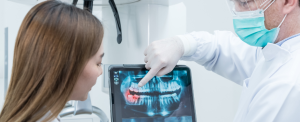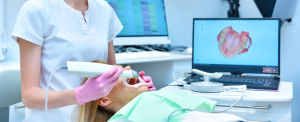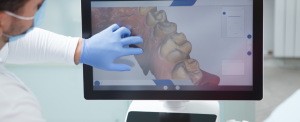A new way of attending patients, that’s how teleodontology is called, which can be used in the field of digital dentistry through virtual appointments. It is a formula that emerged as a result of the pandemic but represents a particular challenge due to the need for dental surgery equipment and direct patient contact.
During the COVID crisis, telemedicine experienced a significant increase in demand, including virtual dental appointments due to movement restrictions. Data from the Opinion and Lifestyle Survey (OPN) revealed that “both England and Scotland continued with remote and hybrid work patterns even after the pandemic” in various medical disciplines.
In this context, the question arises of how digital dentistry will respond to these changes in patient work patterns. Therefore, the objective of this article is to explore the benefits and scope of teleodontology through virtual appointments.
Advantages of Teleodontology in Digital Dentistry
Time efficiency
Teleodontology can provide notable advantages in terms of accessibility and convenience for patients. This approach allows people residing in remote areas or with limited mobility to receive specialized and high-quality dental care without the need to travel. Additionally, both patients and dental professionals can save time and costs since physical travel is not required. The time that patients would normally spend on traveling and waiting at the clinic can be utilized more efficiently. This enables dental professionals to optimize their work, have greater control over their schedules, and improve access and availability for patients.
Patient engagement and education
Reaching patients from the comfort of their homes can increase their participation and education regarding dental health. Studies conducted by the American Research Institute have shown that online learning improves information retention rates. As many dental diseases can be prevented through patient compliance, motivation, and education, teleodontology based on digital dentistry can be a valuable tool for improving communication. Dental professionals can use visual aids, such as digital images, to effectively explain treatment options, dental conditions, and preventive measures. This form of communication can be tailored to different patients and promote greater engagement and understanding of their oral health, encouraging active participation in decisions and discussions about their care.
Technological advances
Digital dentistry has enthusiastically embraced certain technological advancements, such as intraoral cameras, digital scanners, and teledental software. The introduction of artificial intelligence (AI) in the dental field, with orthodontic systems, radiography software, and clinical note-taking, has improved patients’ confidence in dental professionals, their diagnoses, and treatment planning. Moreover, AI-driven systems that use machine learning algorithms, together with clinical and bodily fluid data, can help analyze diseases, treatment patterns, and detect cases early on, providing valuable insights into oral and overall health. By combining the expertise of dental professionals with these advancements, it is possible to provide greater diagnostic accuracy and early risk assessment while working remotely.
Home monitoring
This system allows for self-assessment and remote evaluation of patients’ oral and overall health. With valuable information on common dental issues, such as oral cancer detection, plaque identification, gum inflammation, halitosis, and chronic dental caries.
The increasing demand for remote dentistry has driven the development of home kits, providing patients and physicians with personalized information about oral health. Scientific literature has long supported the idea that oral and overall health can be related to the oral microbiome. Therefore, saliva tests are revolutionizing the assessment, diagnosis, and monitoring of oral health. These tests can detect various biomarkers, providing valuable information about the presence of dental diseases such as caries, gum diseases, and oral infections. Additionally, saliva tests can offer insights into systemic health, such as diabetes and cardiovascular diseases, among others. The results empower patients to take a proactive role in managing their oral health and seek timely professional intervention if needed. As home testing options expand, they will become an integral tool in promoting preventive and holistic dentistry.
As an industry, we must improve our skills to meet the demands of technological advancements and focus on providing excellent patient-centered care. While the future of dentistry will always involve human interaction due to the nature of our clinical work, it is necessary to overcome the barriers that separate it. Want to know more? We have more content for you here.



